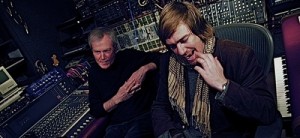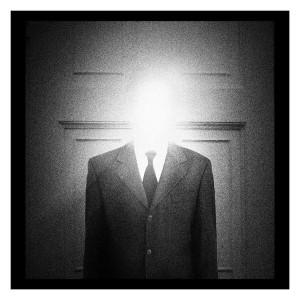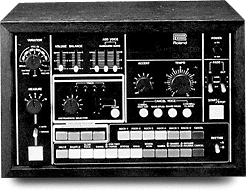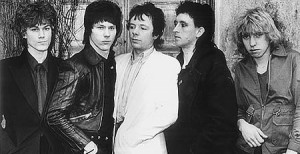John Foxx
Stereoklang in an exclusive talk with synth pioneer John Foxx
Anyone with the slightest interest in electronic music has come across the works of John Foxx. John more or less on his own reshaped the electronic landscape with albums like Metamatic and The Garden. Starting off in the 1970’s forming the band Tiger Lily, that later morphed into the legendary act Ultravox. However, John left the band in 1979 to pursue a solo career and over the years, since then, John has been extremely productive – to say the least. John did withdraw from the music scene for a while to pursue other areas, but reappeared in the 90’s via Nation12 and then later on actively started to pursue his music career often in collaboration with others like Louis Gordon, Harold Budd and most recently with Benge (ben Edwards). Currently we are all set for a real treat with the new album called Interplay, featuring John Foxx & the Maths. Without further a due, and introductions, we dive deep into the mind of Mr. John Foxx
The Metamatic album has lots of pop format songs with raw and distorted synths, a sound that still feels fresh. But no-one picked up on that combination until much later, e.g EBM and Futurepop movement in the 90s and even more so by the Skweee movement of the 00s. Not even yourself continued in that direction with those raw synth sounds until your more recent work. – Why didn’t you pursue that direction? Was it going against the time too much?
There were many other things to pursue. For instance, reclaiming some of my own ground from ‘Systems of Romance’ on ‘The Garden’ album. I also wanted to make ‘Cathedral Oceans’ and other kinds of quiet music.
Then there was the preoccupation with Psychedelia, and its link to German electronic music. This wasn’t at all recognized in England at the time. At one point, I was also afraid that perhaps Metamatic was too raw and minimal and cold. This seems odd, because it seems quite warm now – but it certainly didn’t compared to other records being made at the time. A few years later, when I had the perspective to be able to appraise things from a safe distance, I realized there might be something special about Metamatic after all.
You’ve once said that new instruments like the electric guitar, synthesizers and drum machines changes the shape of the music. That you write to accommodate to the machines – Do you perceive that the DAW/laptop studio made the same impact?
Oh yes, every technological introduction changes the music – there are musicians who would not exist in other environments – The form of many new musicians’ work is enabled by intelligent use of new technologies – Autechre for instance, require a portable digital ecology in order to exist in their present form. Theirs is an intelligent, visceral response to new digital environments.
XXX require flexible digital recording technology to review and refine their music. It is clearly not based on any purely acoustic hierarchy of sound.
Just as Frank Sinatra changed both singing and recording by using a microphone and an amplifier – enabling him to sing quietly in front of a big band, so DAWs and laptops have created methods of working and kinds of music that were not possible before.
In past interviews you talked about enthusiasm and excitement is fundamental for making music e.g. “only to touch a keyboard made excited”. – What makes you excited today and is the return to vintage synthesizers part of that?
I still get ideas as soon as the CR78 Drum machine gets switched on, and certain synths will do that too – The Vocoder Plus always generates a song idea and so does the Juno 60. The Arp is mainly used for completing the songs and generating extreme sounds.
I’ve lately begun to use granular synthesis – it’s really interesting, Quite violent on occasion. It may even be the true non-imitative voice of digital technology –and I’ve been waiting for that for some time. New technology is always expected to imitate a previous form, until someone demonstrates its unique properties. Formica was made to imitate wood, for instance, just as synthesizers were made to imitate orchestras – until we all decided they should make sounds not possible before.
What is your take on today’s electronic music scene? How has it evolved, what artists are pushing the envelope and are there any artists/bands that stand out in the crowd?
There is a fascinating electronic minimalist scene in New York – Xeno and Oaklander and Weird Records, for instance, and Lowfish in Canada. In England there is Ghost Box and Warp and Burial. I deeply enjoy what Ladytron do, and there are many other new labels and artists across Scandinavia and Europe. Tara Busch is capable of doing wonderfully alarming things, and Serafina Steer has made a beautifully eccentric album with Benge. I’ve also been interested recently in how guitars are being used as sound sources, often electronically cut-up, treated and reassembled almost into abstraction – Lonelady, Seafeel and The Soft Moon are all doing this, in various new ways. We certainly have more interesting music around now than ever before.
Much of the new wave/synth concept and especially the lyrics seem to have it roots in Ballard and other writers’ visions. They were some kind of prophets. Most of the new and innovative music of the 90’s and 00’s (IDM for e.g) is more abstract and instrumental and the prophets are the pills. – Did artists put more meaning into their work the 60’s and 70’s?
Well – chemically induced visions have been around ever since music has been made.
As for writers – Ballard and Burroughs have now been joined by new generations of writers, such as Paul Auster, Peter Ackroyd, Iain Sinclair, Kazuo Ishiguro and the rediscovery of seminal authors, such a John Cheever. Things have become more complicated and many writers are now attempting to map what is happening. But the abstract, non-literal side of music is equally interesting. Certain forms of dance and electronic music seem to be busy conducting a conversation in new abstract terms. This is very exciting. These new sonic hieroglyphs have created an international urban code. Every new recording is a reply to a previous statement, with participants all over the globe.
You’ve once said that Stockhousen’s theories are more attractive than his music but the theories makes you review what you are doing and put them in another light. – What theories and ideas inspire your work, currently?
I’m always interested in what happens when you remove a major factor from a form – my whole stance on electronic music for instance was to see what happened if you took America out of popular music – it was quite a challenge – but very rewarding. In the end, that was Metamatic. I’ve long been interested in French music around 1900 – the Parisian rejection of Wagnerian excess, and the will to create something minimal and elegant– here we have the music of Satie in particular.
Satie particularly wanted to remove anything dramatic or grandiose. In doing this he devised a new form, using solo piano. I love this music – it is so beautiful and elusive and seems deceptively simple, but it is actually very difficult to be so simple. I’ve also been exploring the origins of modern media, such as Television, Radio, Telephone etc. and made some very interesting discoveries –
For instance, a surprising common factor in their invention is that it was partly motivated by a desire to explore the possibility of communication with spirit voices. Spiritualism was a very popular concept when Logie Baird, Marconi and Graham Bell were working – here is a link to a BBC site which details some of this http://news.bbc.co.uk/1/hi/magazine/4185356.stm
Scientific methodology was the way they assumed was suitable to investigate such phenomenon. In doing this, they each made significant discoveries, which eventually led to the development of modern media. (We still use the term ‘medium’ to describe a modern technological communications process, for instance, when this was previously used as a term for someone who claimed to communicate with spirits). All this has coincided with another thread of theory – I’ve long felt that we don’t really understand media – what it is, what it can do, how it is affecting us. One small instance of this – we are surrounded by ghosts of the dead, yet we don’t think this is at all odd – we can watch the image of Marilyn Monroe anytime we want to. She is made of light and electricity, she talks dances, sings, smiles, yet she has been dead for forty years, she is dust – yet she lives on. We all see her from time to time. What else is that image but a ghost?
I am simply attempting to find a way of describing what is happening, so it can be seen better, so I can begin to understand such media processes, and their effects on us, more clearly. All this merged with the interest in Satie, during the making of a set of recordings of simple piano music, recorded in my front room. At first, I wanted all the sounds of the mechanism of the piano and the sounds from outside the windows to be audible. During playback, it was fascinating to hear sounds I hadn’t noticed at the time –breathing, movement, even voices through the wall, from the neighbour’s house.
It was all strongly reminiscent of a séance, especially since these were often conducted in front rooms or parlours. (In Britain, this is the term for a room kept as the ‘best room’ for receiving visitors, also where the piano would be kept). So I began combining these piano pieces with other recordings made in various environments, including a machine left recording at night in empty rooms. Some of the sounds and the stereo movements captured in this way are really startling.
I also recorded white noise from an untuned crystal radio and slowed small sections of it, to obtain apparent words and phrases. It’s a method of examining the grain of sound – to find things buried inside it. I guess the unconscious, plus our instinctive desire to connect and make patterns, both come strongly into play here. Both of these seem well worth encouraging, since they equally apply to the way we comprehend music. The recordings will be released later this year, and will be titled ‘Electricity and Ghosts’. Since beginning these investigations, I discovered another artist working in a parallel way – Susan Hiller, who currently has an exhibition at Tate Britain, in London. http://www.tate.org.uk/britain/exhibitions/susanhiller/default.shtm Her work simply acknowledges the importance of the inexplicable – its presence and purpose in human life, from an artistic and anthropological perspective – meaning a humanist, empathic, participatory one. It is also a welcome reply to some recent, rather oppressive and authoritarian statements by self-publicising scientists, who are bullying popular opinion at present. As she says in one interview – ‘”Artists’ research disturbs the kind of research that scientists do”. Her work certainly seems to offer a far broader perspective than the scientists’ does.
You have used your artist alias John Foxx throughout your career and even described him as “more strong and intelligent” than you are. – Who is composing the music and then working in the studio? John or Dennis?
Well, we work together sometimes, you know. Foxx is certainly much more intelligent than me. He is a naively perfected entity. A sort of manifested idea. The positive side of this is being constantly forced to work hard in the attempt to reach and maintain his standards. This often requires complicated recording procedures and a lot of editing and re-shooting. Gives me something to aspire to, but it can be exhausting.
In the end it will be either him or me. So one day I might abandon him by the side of a motorway.
He’d probably start a new band, purely out of revenge.
Can you describe your creative process; where do you start, demos, moving on to studio work etc.
I only occasionally make demos. Mostly the work is assembled in the studio. I began as a painter – an artist, and I guess still use the same techniques and principles to make music – a process in some ways like painting or sculpture – or gardening. Once you discover certain principles, you find you can apply them to almost any kind of work, in any medium.
How much have you embraced the world of software DAWs and free VST synths etc.
Oh, I’ll use anything that sounds useful and is easy to operate – good design means simple operation – Bad design means anything complicated to use – that gets instantly rejected. Complex is not the same thing as complicated
On the new album you are using lots of vintage equipment. Are they all analog or did you use digital equipment also. – Did the use of vintage synthesizers change the working process in the studio?
We only used analogue synths on that album – nothing digital. Ben is very strict about that. He patrols the border constantly. Very vigilant. We were interested in how even a slight shift in technology alters things profoundly – for instance if you can’t use MIDI or digital editing to place sounds, you have to play them manually, or sequence them. Each of these methods will give you entirely different results, so the feel and meaning of the song will alter too. After a while, you realize you are dealing with an entire lost or alternative ecology.
Working in Benges studio with lots of analog synths – any new found favourites?
Oh yes – that big 1960’s Moog system of Benge’s – Hand built and unique. It sounds massive.
Also, a cheap little keyboard, which I’m not going to mention, because I want to buy one myself. It gave me ideas every time I used it. Beautiful.
You must be one of the most persistent user of CR-78 – are you using the real thing or samples? Could you explain the love affair with this machine?
Oh, I think we’ve come to understand each other very well over the years. The CR78 is a marvelous, accidental confection – a non-dancing Japanese programmer’s mathematical reconstruction of western dance patterns, intended for use as a cabaret accompaniment device.
Serious recording engineers despised it. But they were wrong.
I immediately realized that this machine offered an entirely new approach to percussion. Its rhythms are so bizarre that it is impossible to get anything conventional out of it. If you make it central in a recording, you immediately have a unique sonic layout and pattern – a new kind of matrix, in which you can easily position other equally delicious sounds, like a piece of abstract sculpture. That is how it demanded that you create something not heard before. Any instrument that can make such demands is infinitely valuable.
You seem to a have a long love affair for choir voices. Many rock/pop singers started out in the church choir. – Were you a choir boy?
Oh yes. I learnt a great deal from that – about how the human voice can react with architecture. For instance, it seems the entire form of chant was enabled by echoes coming back from the walls of caves and cathedrals. You can sing in harmony with your own returning echoes. Later, I realized that is what encouraged the particular scales and harmonic structures that evolved in those forms. A true architectural music.
When digital reverberation devices came along, you could have a cathedral in a briefcase, and I wanted to explore this, using the form I had learnt as a child. I felt it makes a nice continuity, using new digital architecture to enable another evolution of our most ancient form of music. Those explorations became Cathedral Oceans and My Lost City.
Ultravox has decided to re-unite for a new album, do you have any relations with the old team these days?
I’m currently working with Robin Simon, who is the most original guitarist I have ever heard. Systems of Romance would have been an entirely different record without him.Robin has influenced generations of guitarists, but his deep contribution to modern music may take another twenty years to become visible, but it is really fundamental. No-one sounded like Robin before he arrived– now everyone does. It’s so much a part of things that people imagine it has always been that way.
He was the first to abandon all blues and rock clichés, at the same time, he designed a sound that integrated completely with synthesizers, by incorporating layered echoes, distortion and a range of radical moving stereo and spatial effects into a single organic sound, then he selectively multitracked further layers of this into texturally monolithic recordings that contained very little reference to anything created previously.
Computers/laptops are not only complete music studios but also video production tools. – What’s your take on all those videos on Youtube accompanied by yours (and others) music?
I really like them – they’ve created a new public arena for filmmakers, a new way to make and present ideas and make parallel stories and connections with music. I enjoy the democratic nature of this – another techno/humanistic conversation that is constantly gathering force and sophistication.
Spielberg and Lucas began as children by using super 8 film, so imagine what future filmmakers will make in thirty years. By then our present cinema will seem like old Lumiere brothers’ films appear to us now– charming, but naïve.







